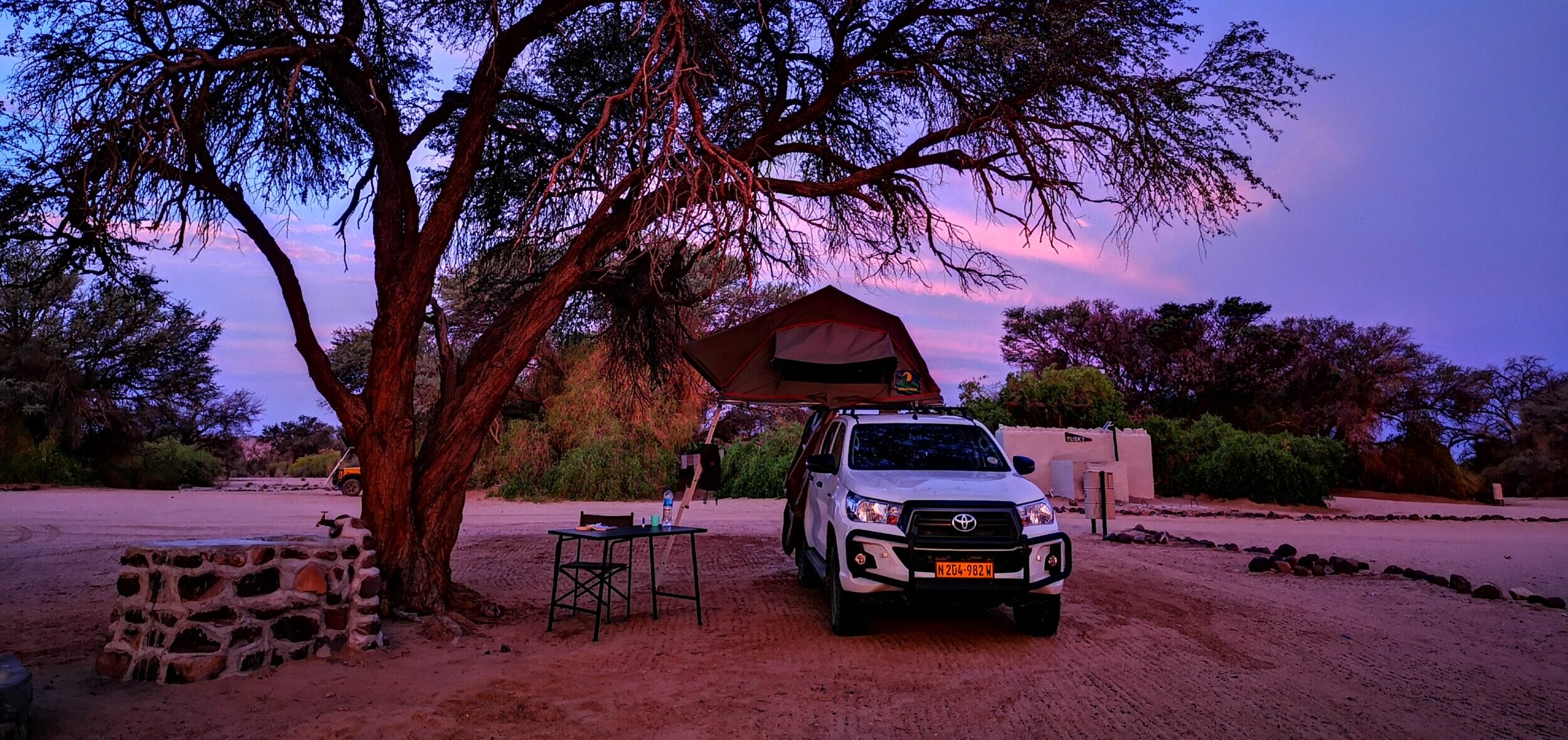Discover the best campsites in Namibia during your 4WD adventure. After 10 weeks of camping throughout Namibia with a roof tent, I’m sharing my favorite campgrounds here, from wild desert locations to luxury safari lodges. Including practical tips, booking advice, and precise locations.
Why Camping in Namibia Is the Ultimate Adventure
Camping in Namibia is synonymous with endless freedom. With only 2.5 million inhabitants spread across an area larger than France, you have the space here that you won’t find anywhere else. The combination of spectacular landscapes, crystal-clear starry skies, and unique wildlife makes every campsite an unforgettable experience.

My experience: During my 10-week solo journey through Namibia with a 4WD and roof tent, I drove more than 10,000 kilometers and stayed overnight at dozens of different campsites. Below I share the absolute top picks, from basic bush camps to luxury safari campings.
What Makes Camping in Namibia So Special?
- Endless space: Often you’re the only guest for kilometers around
- Starry sky: Minimal light pollution creates spectacular nights
- Wildlife: From desert elephants to Big Five in Etosha
- Diversity: From Namib Desert to tropical Caprivi Strip
- True wilderness: Many locations without electricity or running water
The 12 Best Campsites in Namibia: Complete Guide
1. Spitzkoppe Campsite – Namibia’s Number 1
Why this is THE best campsite in Namibia: Camping among the iconic granite domes of “Africa’s Matterhorn” is a life-changing experience. You choose your own spot among the red rocks with direct views of the famous Rock Arch. I went back in my 10 weeks to stay here for a second time.

Practical information:
- Location: Erongo region, 250km from Windhoek
- Facilities: Basic toilets, no electricity/water
- Reservations: Email reservations@logufa.com
Unique highlights:
- Camping directly next to natural swimming pools in the rocks
- Spectacular sunsets against red granite formations
- Opportunities for guided rock climbing
- Millions of stars without light pollution
Insider tip: Choose campsite 9A for the best sunset position. Bring enough water, as there are no facilities at individual spots.
Read everything you need to know about Spitzkoppe
2. Etosha National Park Campsites – Wildlife Paradise
Three top campings in one park: Etosha offers various camping locations, each with unique wildlife opportunities. After 5 nights in different Etosha camps, I can recommend the following:
Okaukuejo Rest Camp
- Highlight: Illuminated waterhole with nocturnal wildlife viewing
- Wildlife: Elephants, lions, rhinos visible daily
- Facilities: Restaurant, shop, swimming pool, wifi

Halali Rest Camp
- Advantage: Centrally located, perfect base
- Camping: Shaded spots with good facilities
- Activities: Guided drives, walking trails
Namutoni Rest Camp
- Special: Historic fort from German colonial times
- Atmosphere: Most authentic camp in Etosha
- Game viewing: Excellent location for cats and big herds
Booking tip: Reserve at least 6 months in advance via NWR website. Etosha camps are most popular during dry winter months (May-October).
Read about my week in Etosha – All you need to know for your visit
3. Sossusvlei Sesriem Campsite – Heart of the Namib
The only campsite within Namib-Naukluft Park: Sesriem Campsite is your ticket to early access to Sossusvlei and Deadvlei, essential for the best photos of Big Daddy and Dune 45.
Why camp here:
- Early access: As the only one inside the park, you’re first there at sunrise
- Iconic dunes: World’s highest sand dunes within walking distance
- Desert adapted wildlife: Gemsbok, springbok, desert fox
- Complete silence: Absolute peace in the world’s oldest desert

Practical:
- Reservations required: Via NWR, often fully booked months ahead
- Facilities: Modern toilet/shower block, restaurant, gas station
- Tip: Book minimum 2 nights for complete Sossusvlei experience
Read all about visiting the most iconic spot of Namibia: Sossusvlei
4. Brandberg White Lady Campsite – Desert Elephant Territory
Unique desert elephant experience: In the shadow of Namibia’s highest mountain, you camp in the habitat of the legendary desert elephants.
Highlights:
- Desert elephant tracking: Guided walks searching for elephants
- Rock paintings: Famous White Lady rock art (30,000 years old)
- Mountain climbing: Guided walks to Brandberg summit
- Absolute peace: Often the only guests in this remote area
- Location: Damaraland, 4WD required for last 15km
- Price: N$180 per person, camping only
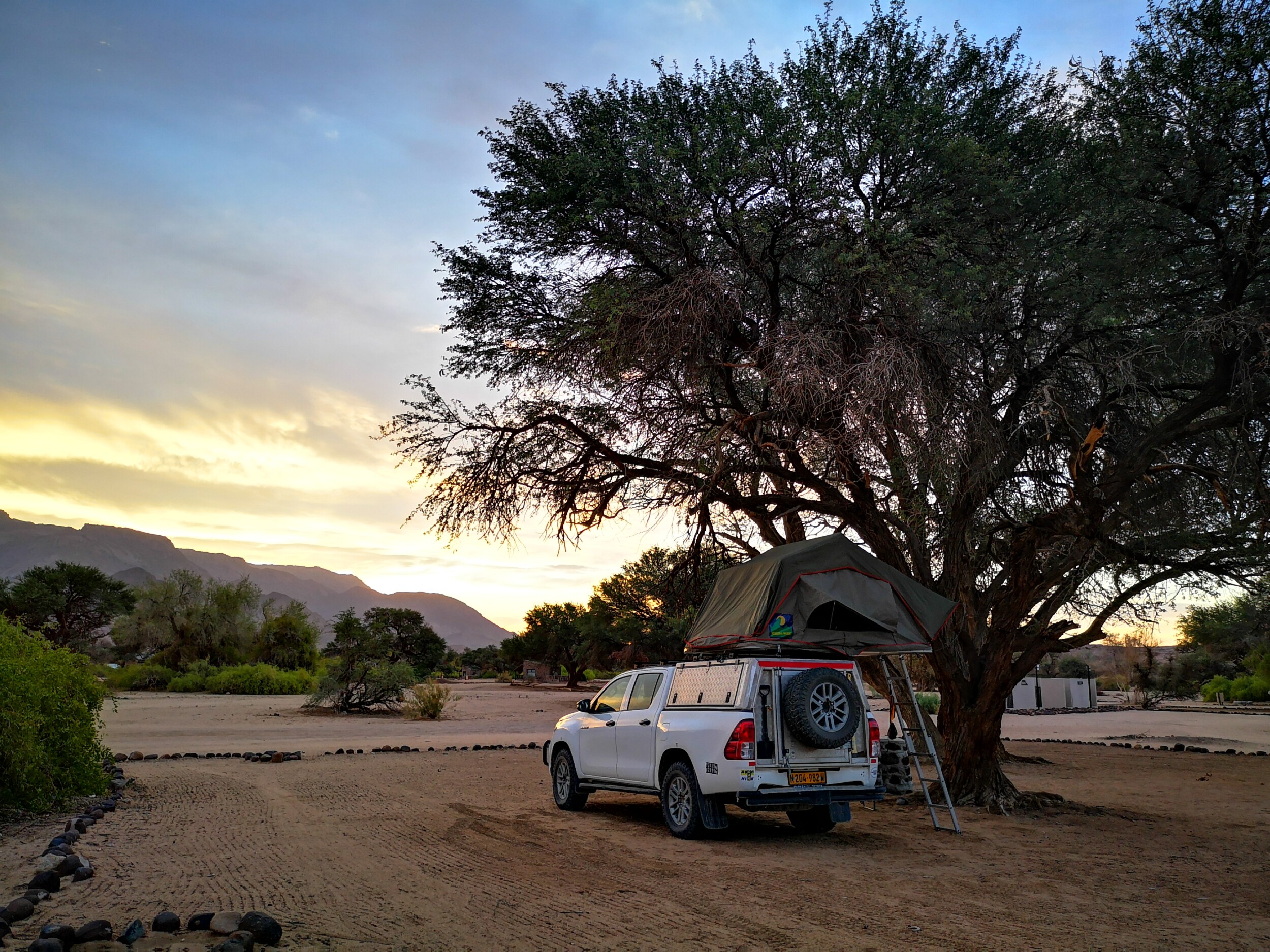
5. Fish River Canyon Ai-Ais Campsite – Africa’s Grand Canyon
Thermal springs paradise: After a day exploring the world’s second-largest canyon, relax in natural hot springs. Unfortunately, I didn’t visit here during my trip, but it’s on the list.
Unique to Ai-Ais:
- Thermal pools: Natural 65°C springs for ultimate relaxation
- Massage spa: Professional treatments in desert setting
- Canyon views: Spectacular sunsets over Fish River Canyon
- Hiking base: Starting point for the famous 5-day canyon hike
- Facilities: Restaurant, shop, thermal pools included, massage extra
- Tip: “Ai-Ais” means “burning water” in local language, perfectly described!
6. Ngepi Campsite – Caprivi Strip Jungle Experience
Hippo heaven in the jungle: This unique campsite on the Kavango River offers a completely different Namibia experience – tropical and green.
Why Ngepi is so special:
- Jungle showers: Unique outdoor bathrooms in beautiful setting
- Hippo spotting: Hippos can walk through the camp
- Mokoro trips: Traditional canoe expeditions
- Details: Toilet with a view, swimming pool in river
- Wildlife: Hippos, crocodiles, 200+ bird species, elephants
- Activities: River cruises, guided walks, fishing, birdwatching
7. Palmwag Campsite – Desert Elephant & Rhino Country
Conservation success story: Camping in the heart of the largest free-roaming black rhino population outside national parks. Unfortunately, I didn’t see any rhinos there, but I did meet Jimbo the elephant. I really loved this campsite with its two swimming pools and excellent restaurant!
Conservation experience:
- Black rhino tracking: Informative guided walks
- Desert elephants: Desert elephants are regularly seen
- Himba culture: Visit authentic Himba community
- Conservation education: Learn about desert conservation
- Location: Kunene region, perfect stopover en route to Etosha or Skeleton Coast
- Price: N$280 per person + conservancy fees
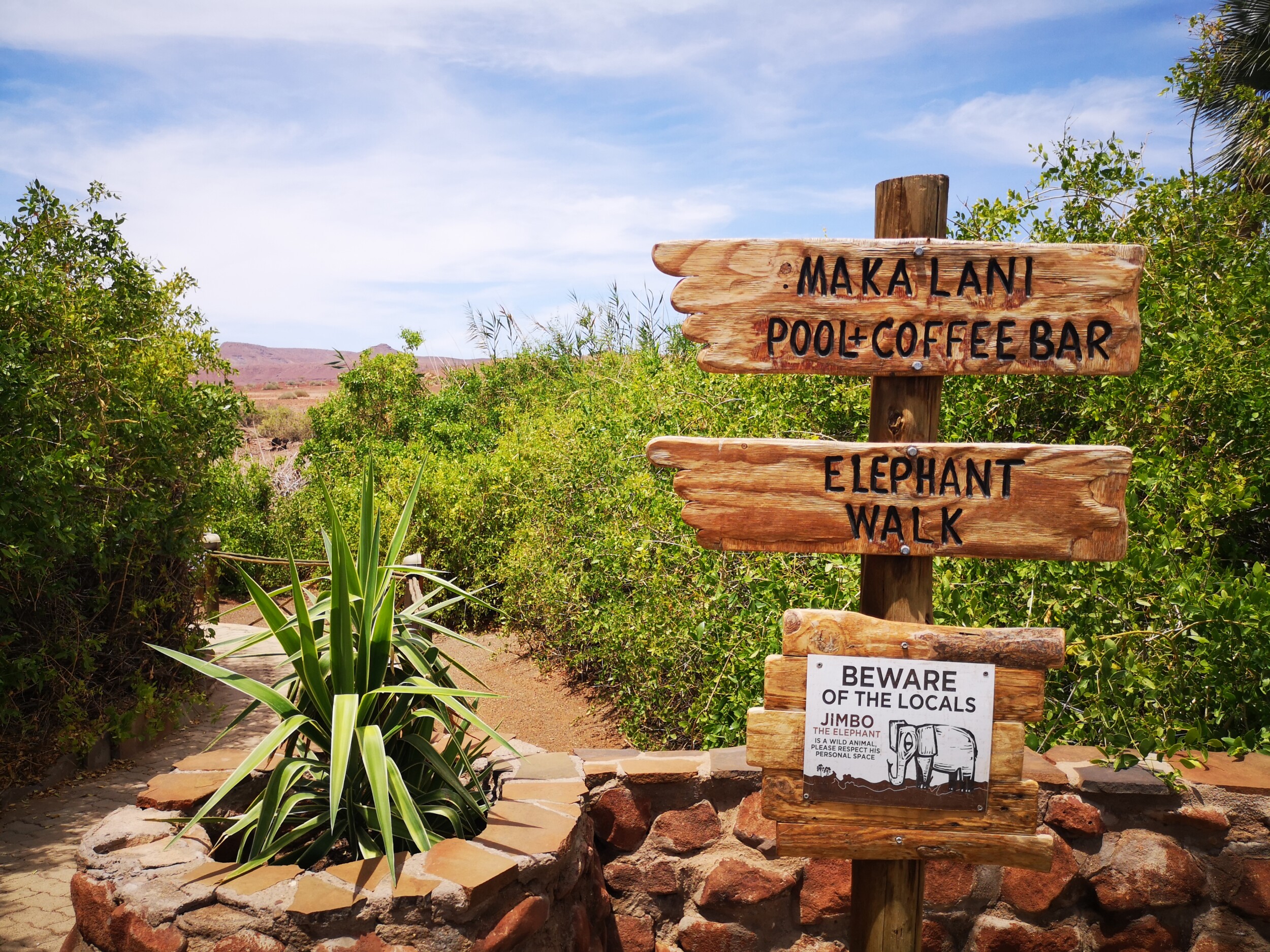
Read about my experience on the campsite of Palmwag – Daramaland
8. Skeleton Coast Torra Bay – Wild Coast Camping
Beach camping extravaganza: The only opportunity to camp on Namibia’s wild Skeleton Coast (only open December/January). I was at the Skeleton Coast in February and stayed in a hotel – I found the area truly impressive! Did you know that lions can sometimes be seen there? I only managed to capture their paw prints…
Extreme coast experience:
- Beach camping: Directly on the beach with Atlantic Ocean view
- Seal colony: Cape Cross with thousands of seals
- Shipwrecks: Historic shipwrecks along the coast
- Fishing paradise: Some of Africa’s best angling
- Season: Only open December-January
- Booking: Via Namibia Wildlife Resorts, popular with local fishermen
Read about my visit to the Skeleton Coast of Namibia
9. Waterberg Wilderness Campsites – Luxury Bush Experience
Unexpected luxury in the bush: This private wilderness location offers luxury camping with private swimming pools and beautiful views over the Kalahari.

Luxury camping features:
- Private swimming pools: Some sites have their own pool
- Plateau views: 200m above sea level with panoramic vistas
- Endangered species: Sanctuary for black and white rhino
- Guided activities: Professional guidance on walks/safari
- Perfect for: Couples seeking a luxury experience
- My experience: I got an upgrade to a chalet with private pool – truly unforgettable!
Read all about my days at Waterberg Wilderness
10. Bagatelle Kalahari Game Ranch – Perfect for Beginners
Ideal starter campsite: Perfect introduction to Namibia camping with all comfort and nearby activities. I spent my first night here too, set up my tent for the first time, and went to sleep watching a fantastic sunset.
Why perfect for starters:
- Good facilities: Modern bathrooms, restaurant, shop
- Game drives: Organized safari activities available
- San culture: Authentic San experience
- Central location: Perfect stopover Windhoek to Fish River Canyon
- Kalahari experience: Iconic red sand, desert-adapted wildlife
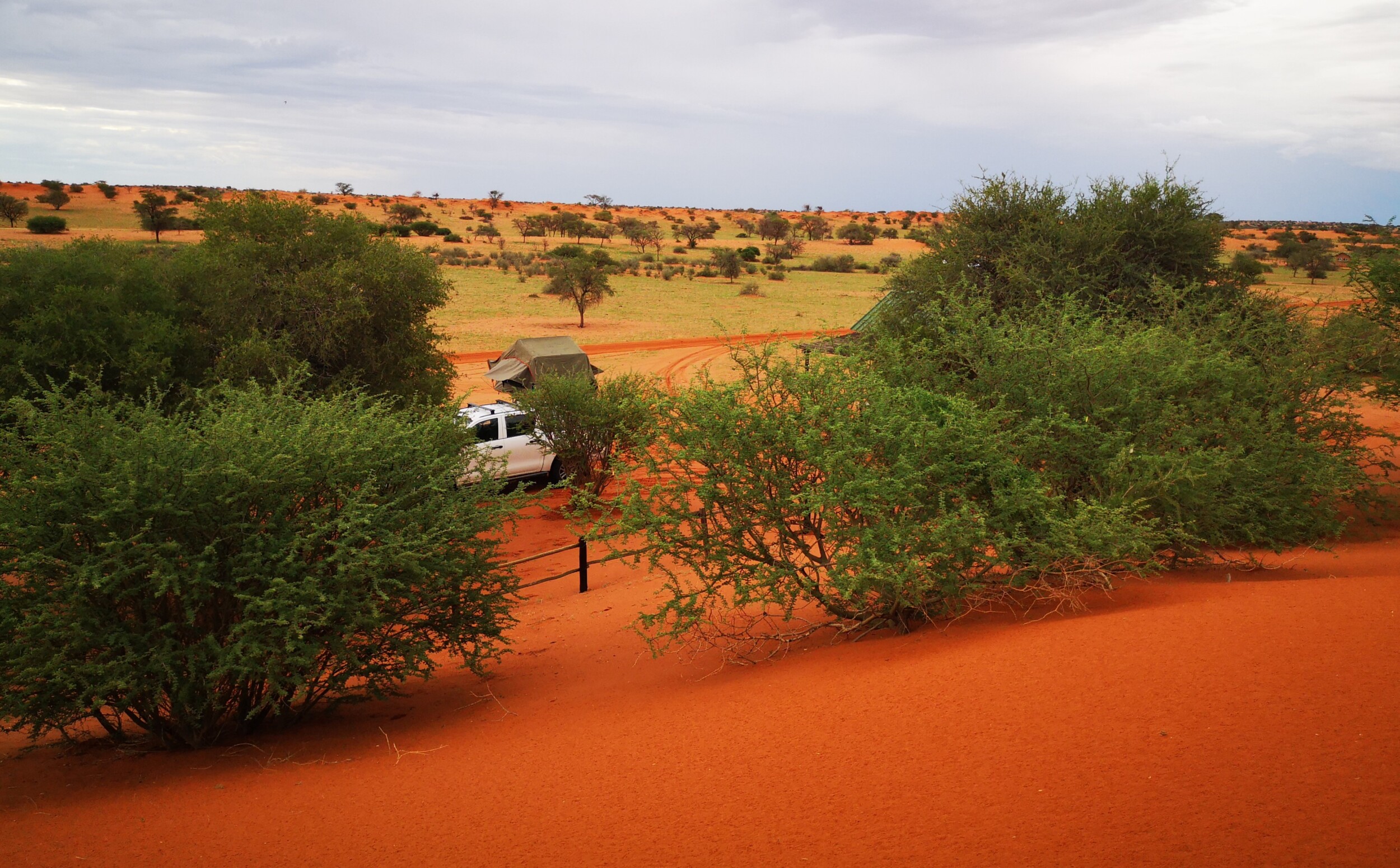
Tip: Great place to practice 4WD driving skills
11. Quiver Tree Forest Rest Camp – Photographic Paradise
Quiver tree forest magic: Camping among 250 prehistoric quiver trees, some 300 years old. Like landing on another planet, surreal landscape. A real must-visit!
Photography highlights:
- Magical golden hour: Beautiful sunrise/sunset
- Unique trees: Ancient quiver trees perfect for night photography
- Giant’s Playground: Walk among these rock formations
- Location: Keetmanshoop region, easily accessible from B1 highway
- Season: Year-round, but winter nights can be very cold
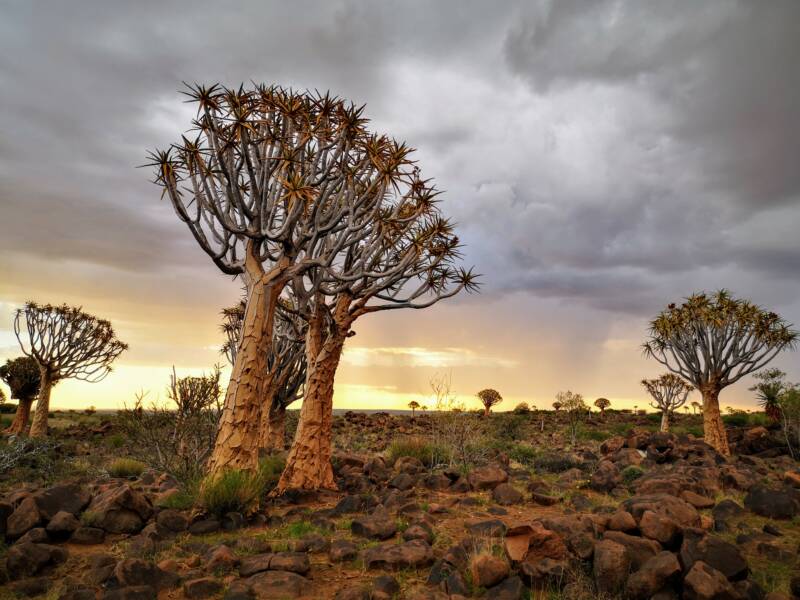
Read about my visit at the Quiver Tree Forest Rest Camp
12. Cape Cross Seal Colony Campsite – Wildlife Spectacle
100,000 seals experience: Overnight stay near one of the world’s largest seal colonies. I’ll be honest right away – it smelled terrible there, but it’s definitely an experience in itself!
Wildlife spectacle:
- Huge colony: 80,000-100,000 fur seals
- Breeding season: November-December for pups
- Photography: Excellent wildlife photography
- Sensory overload: Sounds, smells, sights – complete immersion in seals
- Combine with: Skeleton Coast drive, Swakopmund activities
- Tip: Bring nose clips – the seal smell is really intense!
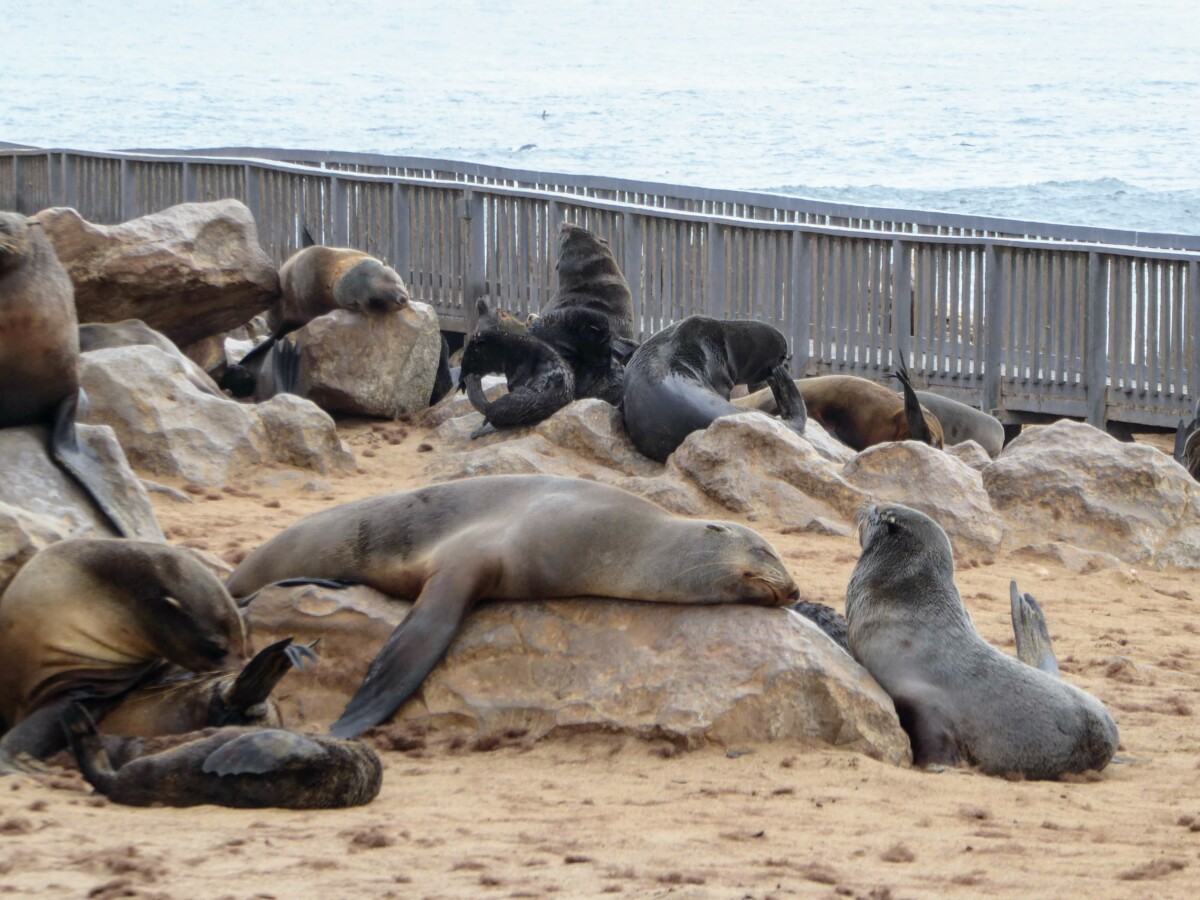
Practical Guide: Camping in Namibia
4WD and Roof Tent: What You Need
Vehicle requirements:
- 4WD required for 80% of best campsites
- High clearance for rocky/sandy terrain
- Spare tires: Minimum 2 spares
- Recovery equipment: Sand ladders, rope, jack
Roof tent vs ground tent:
- Roof tent advantages: Protected from wild animals, great views, easy to set up
- Ground tent: Budget option but vulnerable
- My recommendation: I found the roof tent really worth the investment
Budget Planning: Namibia Camping Costs
Weekly budget (2 people):
- 4WD rental: €350-600 per week (season dependent)
- Fuel: €200-300 (distances are large)
- Campsites: €15-40 per night per person
- Food etc: €150-200 per week
- Park fees: €10-20 per park per person
Total weekly budget: €1000-1500
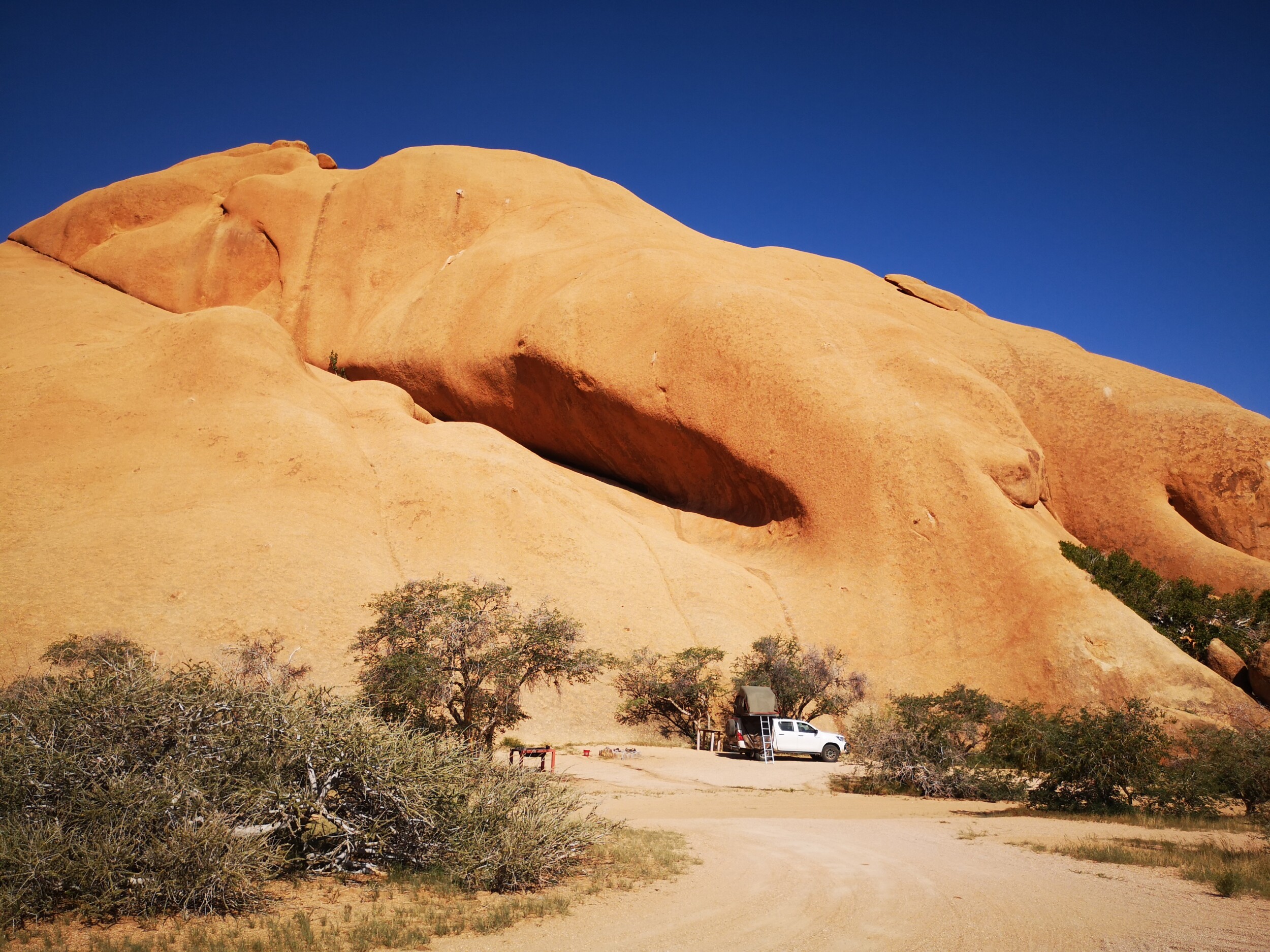
Money-saving tips:
- Travel in low season (Dec-Feb) for better 4WD rates
- Self-cook, this saves enormously
- Wild camping is legal in many places (check regulations)
Best Travel Time for Namibia Camping
Dry season (Apr-Oct): BEST
- Advantages: Perfect weather, best wildlife opportunities, roads accessible
- Temperatures: 20-30°C day, 5-15°C night
- Disadvantages: High season and expensive, busy campsites
Rainy season (Nov-Mar): BUDGET
- Advantages: Low prices, green landscape, fewer tourists
- Disadvantages: Some roads inaccessible, can be very hot, possible rain
- Temperatures: 25-40°C day, 15-25°C night
My recommendation: April-May or September-October
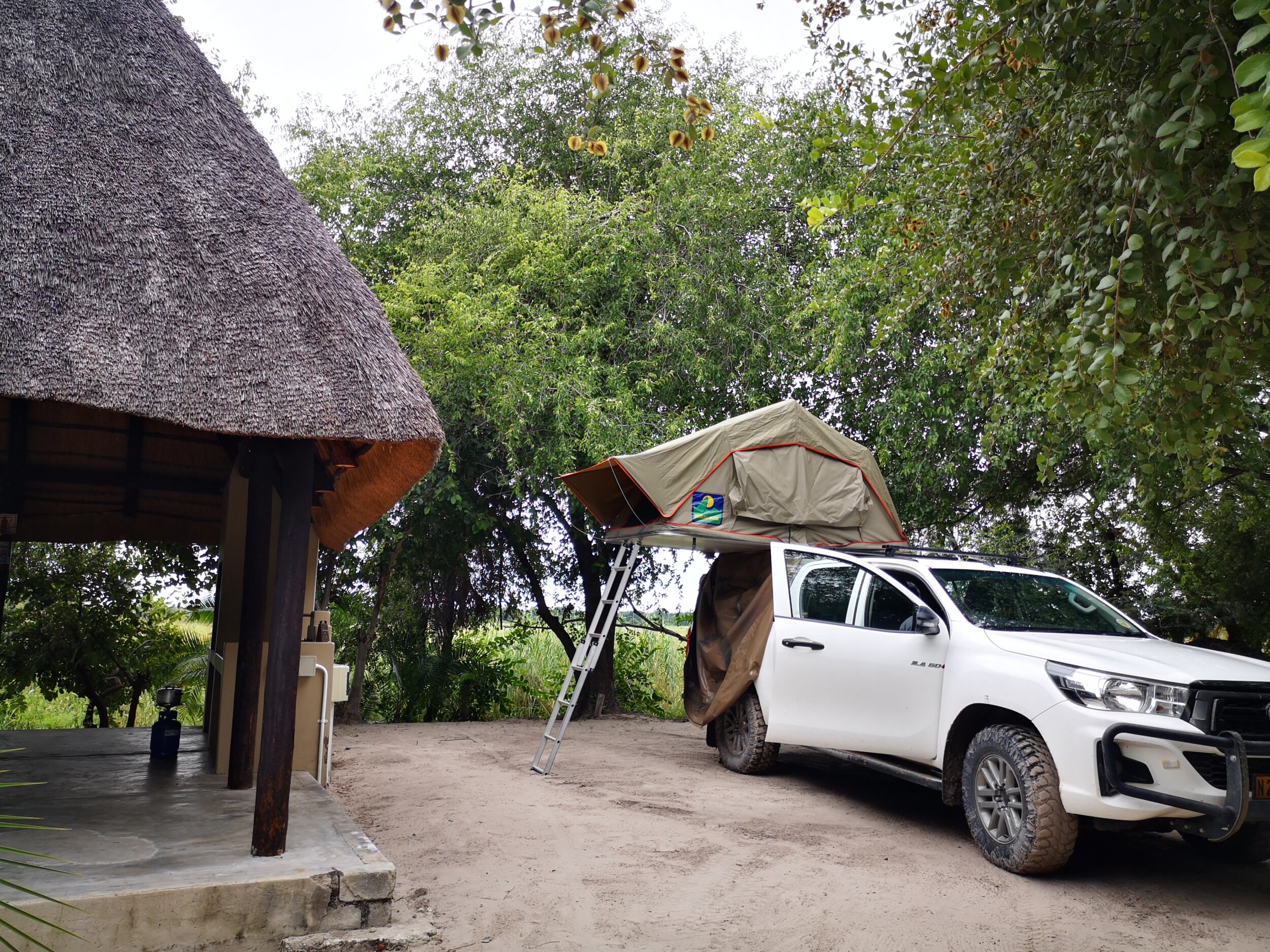
Packing Essentials: Namibia Camping Checklist
Essential:
- Water: 4+ liters per person per day
- Flashlight: Essential for camp (nighttime toilet visits)
- First aid kit: Always a must during travel
Consider:
- Satellite communication: Namibia has no connection in some places
- Warm clothing: Winter nights can be cold
Camping gear specific for Namibia:
- Sand ladders: For when you get stuck in sand
- Cooler box: Essential during camping
- Braai equipment: Essential for authentic experience
The latter is often standard in your rented 4WD with roof tent.
Safety: Namibia Camping Tips
It’s super exciting that you’re going camping in an unfamiliar country, but do prepare yourself a bit for your safety. It is a different country after all, different nature with completely different wildlife than what we’re used to, so read through this and think about what you would do in a “what if” scenario.
Wildlife safety:
- Elephants: Never make contact, stay in vehicle during close encounters
- Big cats: Rare but stay alert if you’re lucky
- Snakes: Check shoes and bed
- Hippos: Most dangerous of all animals, stay away from rivers
Vehicle safety:
- Daily checks: Tire pressure (2.2 bar), oil, water
- Never switch: 2H to 4H while driving
- Stuck protocol: Stay calm, use sand ladders, seek/call help
- Navigation: GPS + offline maps + physical map as backup
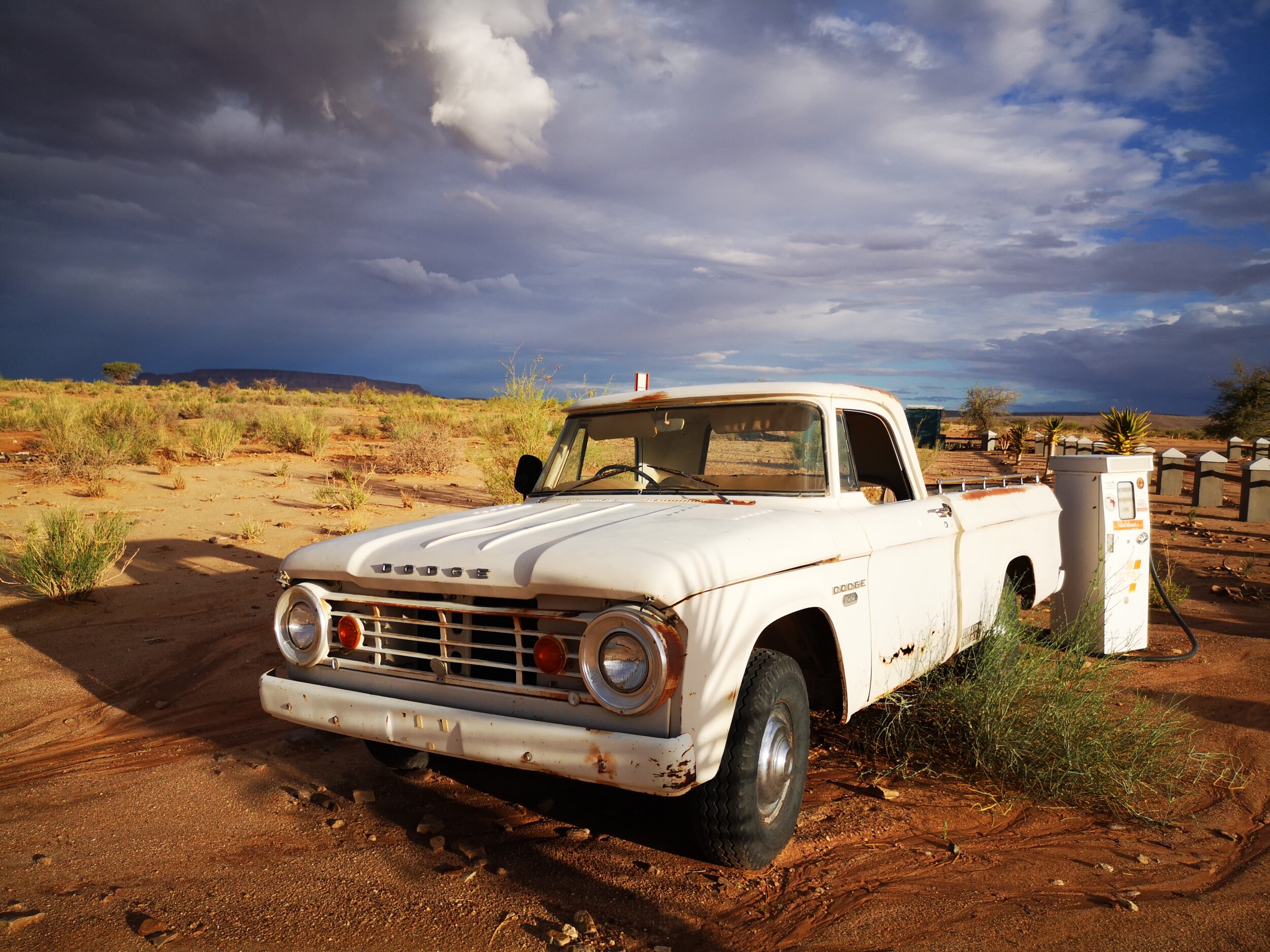
Booking and Reservations: Campsite Planning
Which Campsites to Reserve?
!! Must reserve (months ahead):
- ✅ Etosha camps: 6+ months for winter season
- ✅ Sesriem Campsite: 4+ months, often sold out
- ✅ Torra Bay: December/January, book early
Recommended to reserve:
- ⚠️ Ngepi Campsite: Popular with campers
- ⚠️ Waterberg Wilderness: Limited luxury sites
- ⚠️ Cape Cross area: High season can be full
Walk-in possible:
- ✅ Spitzkoppe: You can choose your own campsite
- ✅ Brandberg: Usually space available
- ✅ Bagatelle: Large capacity
- ✅ Most private campsites: Flexible capacity
Booking Platforms and Websites
Namibia Wildlife Resorts (NWR):
- All national park campsites
- Online booking via nwr.com.na
- Download NWR app for locations/prices
Private camps:
- Wheretostay.na shows many campsites
- Beautiful campsites can be found on Booking.com
Route Planning: 3-Week Namibia Camping Travel Route
Week 1: Southern Namibia Highlights
Windhoek → Keetmanshoop → Fish River Canyon → Lüderitz
- Day 1-2: Windhoek (gear check, last shopping)
- Day 3: Keetmanshoop – Quiver Tree Forest camping
- Day 4-5: Fish River Canyon – Ai-Ais hot springs
- Day 6-7: Lüderitz / Kolmanskop – unique coast experience
Highlights: Quiver tree forest, Fish River Canyon, hot springs
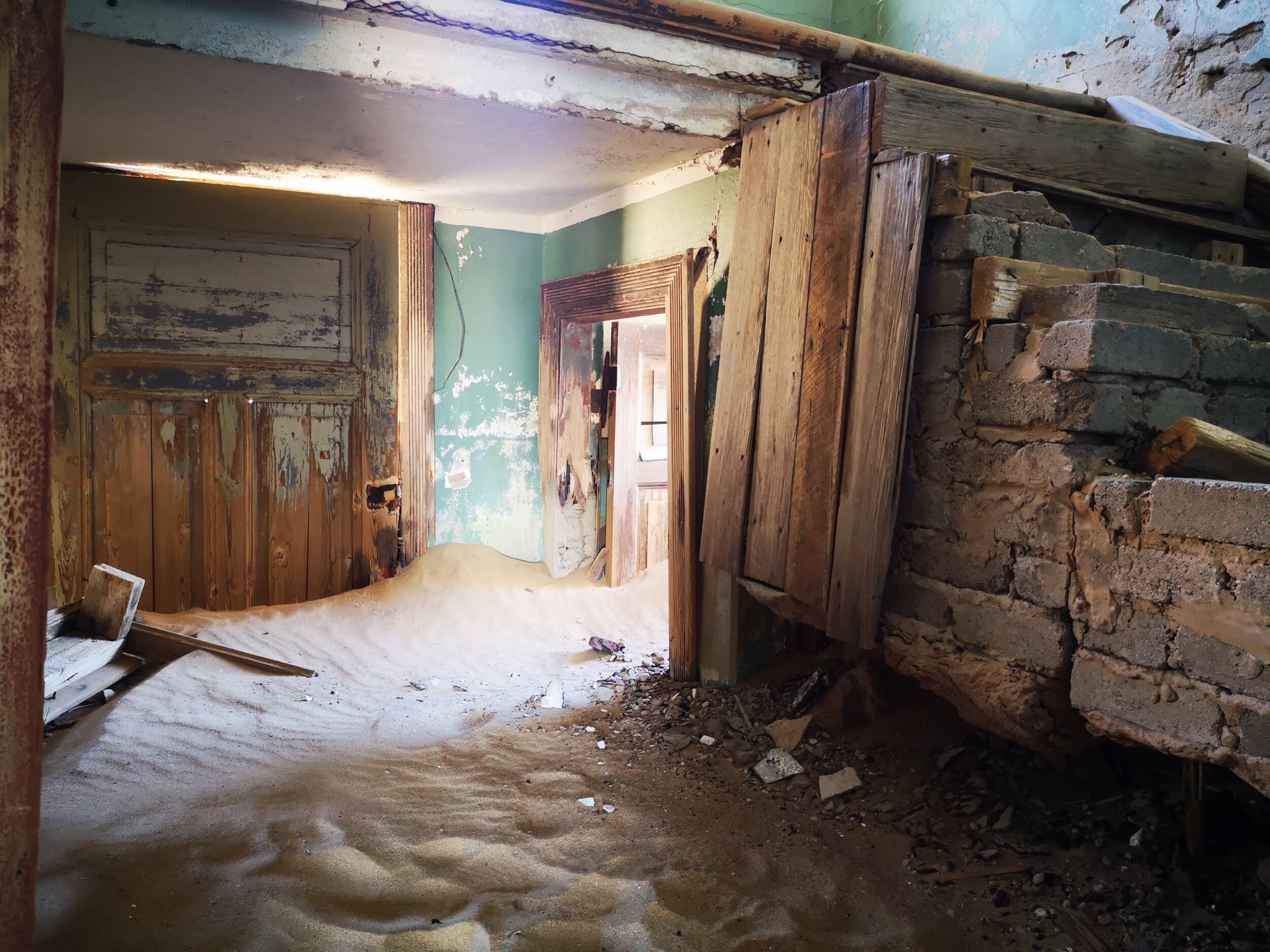
Week 2: Namib Desert Safari
Lüderitz → Sossusvlei → Swakopmund → Spitzkoppe
- Day 8-9: Drive to Sesriem, Sossusvlei sunrise
- Day 10-11: Swakopmund (rest day, adventure activities)
- Day 12-13: Spitzkoppe camping – absolute highlight (I went there twice)
- Day 14: Brandberg – desert elephants
Highlights: Highest sand dunes Sossusvlei, adventure activities, Spitzkoppe rock formations
Week 3: Wildlife and Culture
Damaraland → Etosha → Windhoek
- Day 15-16: Palmwag area – rhino tracking
- Day 17-19: Etosha National Park – big 5 safari
- Day 20-21: Waterberg area – luxury camping
Highlights: Conservation experiences, wildlife photography, cultural encounters
Expert Tips: Maximizing Your Namibia Camping Experience
Photography Tips for Campsites
Golden hour planning:
- Sunrise: Sossusvlei, Spitzkoppe, Fish River Canyon
- Sunset: Palmwag, Etosha waterholes, coastal camping
- Night photography: Quiver trees, Milky Way, campfires

Equipment recommendations:
- Wide-angle lens: For landscape shots
- Telephoto lens: Wildlife photography in Etosha
- Tripod: Essential for night photography
- Extra batteries: You’ll take lots of photos
I have a small Panasonic TZ camera and have been considering upgrading to a system camera or SLR for years. What holds me back is that they are large and I have to carry everything with me. But for the best photos, especially on safaris, you need more than just a phone or compact camera.
Cultural Experiences at Campsites
Himba encounters:
- Respectful visits: Via organized tours
- Photography: Always ask permission first, tips often expected
- Cultural sensitivity: Respect local traditions
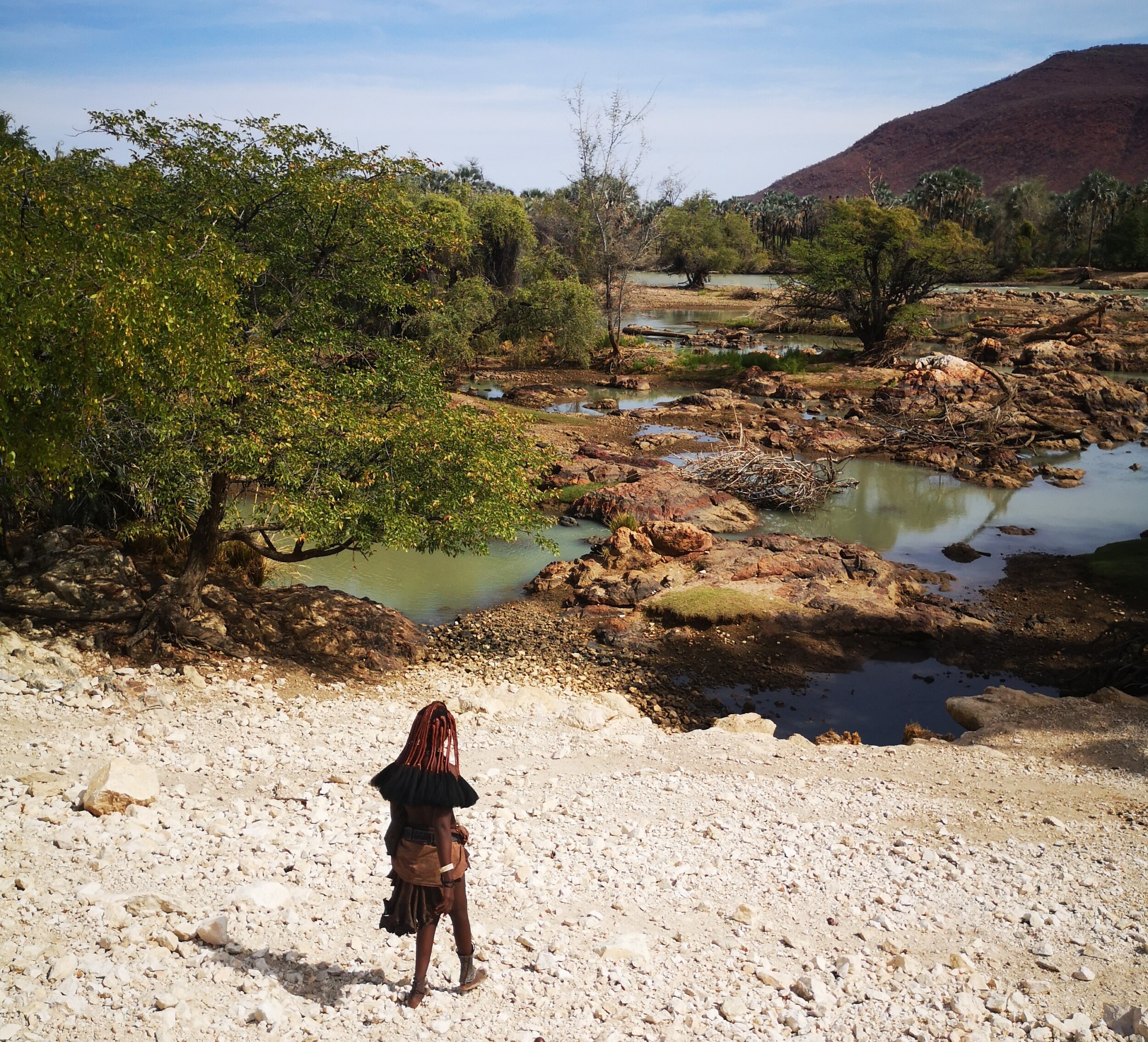
San / Bushmen encounters:
- Traditional skills: Fire making, wildlife tracking, plant knowledge
- Storytelling: Ancient legends and star navigation
- Conservation: Support community-based tourism
Sustainability: Responsible Camping
Leave No Trace principles:
- Waste management: Leave nothing behind
- Water conservation: Namibia is a dry desert country
- Fuel conservation: Plan your routes efficiently
- Respect wildlife: Observe from distance
Support local communities:
- Local guides: Hire local guides where possible
- Local supplies: Shop in local communities
- Community campsites: Support community-run facilities
Bonus: 5 Extra Favorite Campsites from My 10-Week Experience
These campsites just missed my top 12 but made deep impressions during my extensive journey:
13. Onguma Forest Camp – Etosha Private Reserve Luxury
My experience: A welcome change after the basic Etosha NWR camps. The rondavels are also wonderful to stay in. This was also the first time I experienced turndown service. Are you familiar with it? I came back to my room after dinner and the lamps were on and the blankets had been laid out on my bed.
- Luxury level: Private washrooms, spa facilities, professional service
- Wildlife bonus: Same animals as Etosha, but much less crowded
- Perfect timing: After days of basic camping in the park
- Price point: More expensive but absolutely worth it for 1-2 nights
14. Canyon Roadhouse – Nostalgic Fish River Stop
Unique atmosphere: This vintage-themed roadhouse has real character
- Atmosphere: Classic car collection, retro décor, historical charm
- Strategic location: Perfect stopover to/from Fish River Canyon
- Facilities: Good restaurant, decent camping, gas station in classic style
- My tip: Take a beautiful walk in the surroundings, I stayed here 3 nights

Read more about the amazing Fish River Canyon
15. Epupa Falls Lodge & Campsite – Remote Waterfall Paradise
Most remote camping: 4WD adventure to Angola border
- Sound therapy: Constant waterfall sounds, ultimate relaxation
- Unique landscape: Baobab trees, lush green, dramatic contrast
- Cultural highlight: Himba communities, authentic contacts
- Challenge level: Tough 4WD access, but absolutely worth it
- Personal highlight: Felt like stepping back in time, authentic Africa
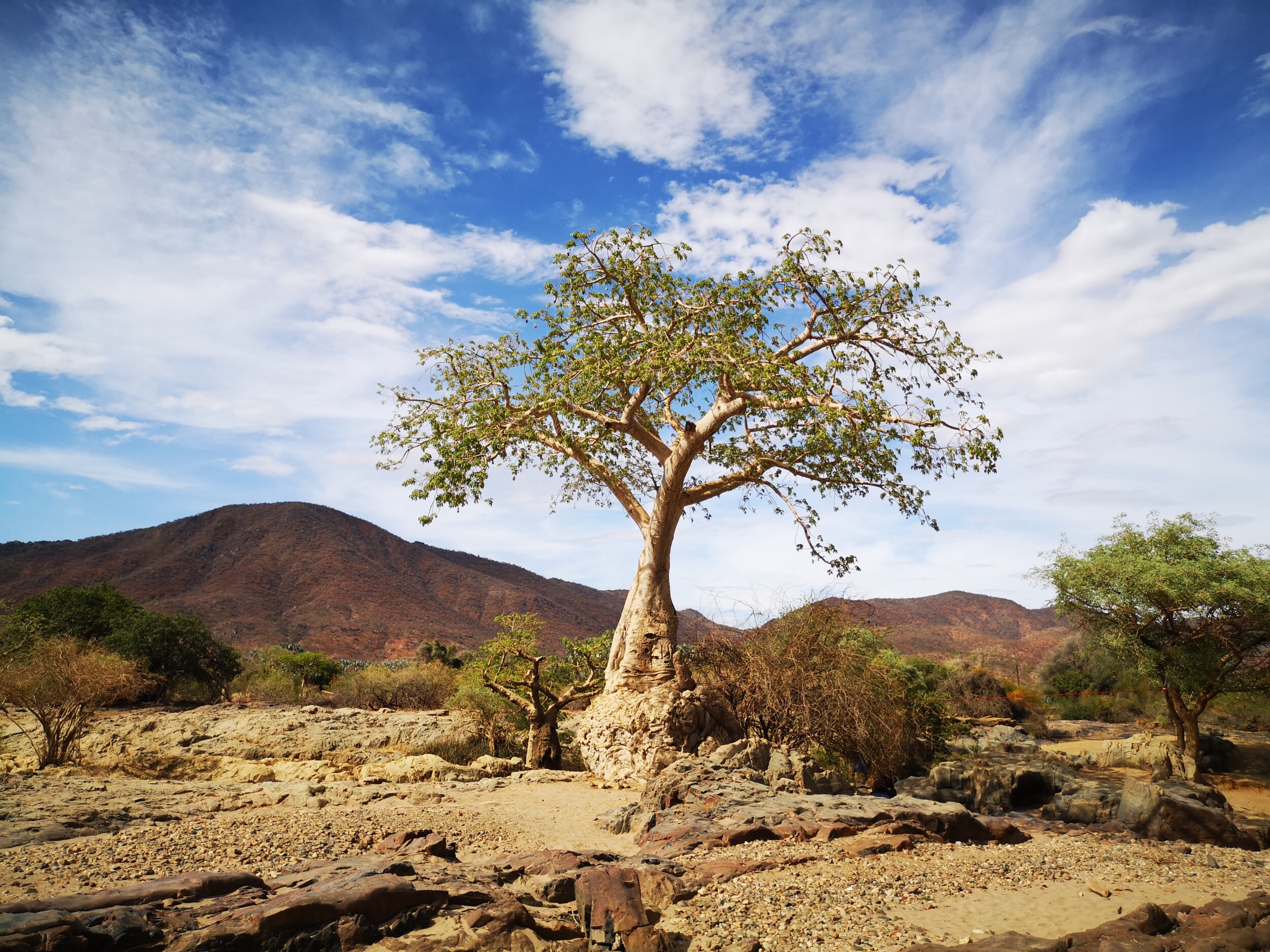
16. Olifantrus Etosha – Hidden Western Gem
Well-kept secret: Western Etosha camp most people skip
- Exclusive feel: Campers only, no lodge guests
- 24/7 waterhole hide: Day and night game viewing possible
- Less crowded: Much quieter than Okaukuejo/Halali
- Wildlife difference: Different animal species due to western location
- My discovery: Felt like having Etosha to myself – truly magical!

17. Urban Camp Windhoek – Perfect Airport Base
Practical perfection: Ideal start/end point for any Namibia trip
- Convenience: 30 minutes from airport, city center accessible
- Comfort after camping: Hot showers, wifi, comfortable beds available
- Social atmosphere: Meet other travelers, share experiences
- Services: Gear check, last-minute shopping, Joe’s Beerhouse within walking distance
- Strategic: Perfect to start or end your trip
These 5 additional locations complete my Namibia camping experience and offer variety for different budgets and comfort levels.
Conclusion: Your Namibia Camping Adventure Starts Now
Camping in Namibia is more than accommodation – it’s truly a life-changing experience. From the mystical rocks of Spitzkoppe to the wildlife spectacle of Etosha, every campsite tells its own story. After 10 weeks and 10,000 kilometers through this beautiful country, I can assure you: Namibia camping changes your perspective on travel, nature, and yourself.
Ready for your own adventure?
✅ Book your 4WD with roof tent
✅ Plan your route with this campsite guide
✅ Pack smart with our packing list
✅ Depart for the adventure of your lifetime
The campfires are waiting for you. The starry sky is ready. Your Namibia story begins at the first campsite.
Useful Links:
- Namibia Wildlife Resorts for national park bookings
- Rent your 4WD with roof tent for the best deals
- 15 interesting facts about Namibia
- Complete packing list for camping in Namibia
